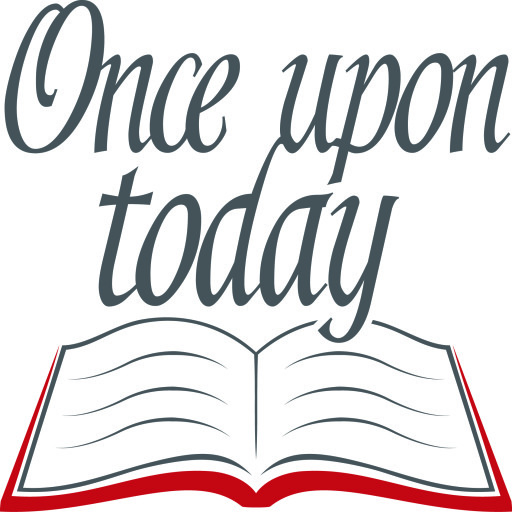Here you can find additional information about the methods used during “Once upon today” as well as links to other interesting material.
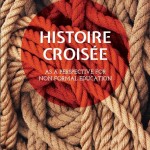 Many of the methods used in our training are described in detail in a recent publication by the Kreisau-Initiative and the Krzyzowa Foundation: “Histoire croisée as a perspective for non-formal education” (2016). You can either download the handbook as a whole (pdf, 13 MB) or read about each of the methods individually in the pdf files below.
Many of the methods used in our training are described in detail in a recent publication by the Kreisau-Initiative and the Krzyzowa Foundation: “Histoire croisée as a perspective for non-formal education” (2016). You can either download the handbook as a whole (pdf, 13 MB) or read about each of the methods individually in the pdf files below.
Methods used during “Once upon today… in Europe” include:
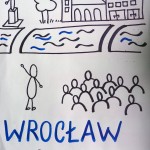 A place and its narratives: The story of a place can be told in different ways. Participants split up in three groups. They discover the place through the perspective of different historical experiences. They then come together in small groups of three people, inform each other about the story they have learned during the day. In Krzyżowa, for example, at least three predominant narratives can be discovered: the history of resistance against the Nazi regime (Kreisauer Kreis), the opposition movements in Eastern Germany and Poland against communism, and the Polish-German reconciliation process leading up to the Mess of Reconciliation with Prime Minister Tadeusz Mazowiecki and Chancellor Helmut Kohl in 1989.
A place and its narratives: The story of a place can be told in different ways. Participants split up in three groups. They discover the place through the perspective of different historical experiences. They then come together in small groups of three people, inform each other about the story they have learned during the day. In Krzyżowa, for example, at least three predominant narratives can be discovered: the history of resistance against the Nazi regime (Kreisauer Kreis), the opposition movements in Eastern Germany and Poland against communism, and the Polish-German reconciliation process leading up to the Mess of Reconciliation with Prime Minister Tadeusz Mazowiecki and Chancellor Helmut Kohl in 1989.
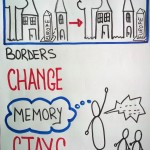 Borders change, memory stays: The method has been designed specifically to deal with the shifts of Polish borders in the aftermath of WWII, to challenge taboos and analyse various narratives related to this topic. It was originally designed by Jolanta Steciuk from the Young Journalists Association “POLIS”. Similarly to the previous method, participants go for a walk in Krzyżowa, take pictures and make observations through the lenses of specific perspectives. Read more in the pdf: Borders change, memory stays.
Borders change, memory stays: The method has been designed specifically to deal with the shifts of Polish borders in the aftermath of WWII, to challenge taboos and analyse various narratives related to this topic. It was originally designed by Jolanta Steciuk from the Young Journalists Association “POLIS”. Similarly to the previous method, participants go for a walk in Krzyżowa, take pictures and make observations through the lenses of specific perspectives. Read more in the pdf: Borders change, memory stays.
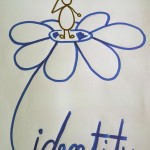 Flower of identity: In this session, participants are asked to draw a flower with petals and leaves and attribute each petal to a concept that they consider important to their identity. These can include gender, nationality, religion, but also less obvious characteristics such as hobbies, interests, sexual identity or others. In the first round, participants work individually and design a private flower that is not shared with others. In the second round, they are asked to create a public flower to be shared with another member of the group. In the third step, participants form groups of four people from different countries. They are now asked to put their flowers into a landscape by contextualizing them with the concepts of history, memory, communities and narratives. This exercise helps participants to draw on their own experience in order to understand that identities are always rich and complex. As every person is unique, so are communities and people living in one country or in Europe as a whole. Therefore the exercise helps to develop a concept of diversity. Read more in the pdf: Flowers of identity
Flower of identity: In this session, participants are asked to draw a flower with petals and leaves and attribute each petal to a concept that they consider important to their identity. These can include gender, nationality, religion, but also less obvious characteristics such as hobbies, interests, sexual identity or others. In the first round, participants work individually and design a private flower that is not shared with others. In the second round, they are asked to create a public flower to be shared with another member of the group. In the third step, participants form groups of four people from different countries. They are now asked to put their flowers into a landscape by contextualizing them with the concepts of history, memory, communities and narratives. This exercise helps participants to draw on their own experience in order to understand that identities are always rich and complex. As every person is unique, so are communities and people living in one country or in Europe as a whole. Therefore the exercise helps to develop a concept of diversity. Read more in the pdf: Flowers of identity
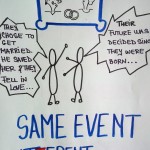 Same event, different stories: Participants split up into working groups of 4-6, consisting of an equal number of people from two different countries, e.g. 2 from Germany and 2 from Poland. They select one historical event that they consider important either for both countries, for European history or from their personal point of view. First, every group splits into national subgroups which have to agree on a dominant narrative about this particular event in their home country. In the second phase, both sub-groups come together, share these narratives and compare them. In the plenary session, participants report on differences and similarities as well as on the aspects that struck or surprised them most. Finally, the group as a whole will try to identify characteristics of how narratives are constructed, pointing to concepts such as power, hierarchy or the construction of boundaries. Read more in the pdf: Same event, different story
Same event, different stories: Participants split up into working groups of 4-6, consisting of an equal number of people from two different countries, e.g. 2 from Germany and 2 from Poland. They select one historical event that they consider important either for both countries, for European history or from their personal point of view. First, every group splits into national subgroups which have to agree on a dominant narrative about this particular event in their home country. In the second phase, both sub-groups come together, share these narratives and compare them. In the plenary session, participants report on differences and similarities as well as on the aspects that struck or surprised them most. Finally, the group as a whole will try to identify characteristics of how narratives are constructed, pointing to concepts such as power, hierarchy or the construction of boundaries. Read more in the pdf: Same event, different story
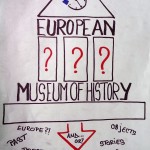 A European Museum of History: At the core of the training, this method will encourage participants to think about the representation of history in a European context. Participants split up in groups and are given the task to develop a concept for a European Museum of History. They can freely decide about the place and form of the museum. Additionally, they will have to agree about important events, developments and objects to be presented. This exercise will show participants how difficult it is in practice to be aware of different stories when presenting history today. It also shows how the expectations of different communities and nations reflect contemporary political challenges and issues of participation and belonging in contemporary European societies. Central to this exercise is that participants are encouraged to add their personal perspectives and stories. In a second phase, they will design objects during creative workshops to be exhibited in their ‘museum’. Read more in the pdf: European Museum of History
A European Museum of History: At the core of the training, this method will encourage participants to think about the representation of history in a European context. Participants split up in groups and are given the task to develop a concept for a European Museum of History. They can freely decide about the place and form of the museum. Additionally, they will have to agree about important events, developments and objects to be presented. This exercise will show participants how difficult it is in practice to be aware of different stories when presenting history today. It also shows how the expectations of different communities and nations reflect contemporary political challenges and issues of participation and belonging in contemporary European societies. Central to this exercise is that participants are encouraged to add their personal perspectives and stories. In a second phase, they will design objects during creative workshops to be exhibited in their ‘museum’. Read more in the pdf: European Museum of History
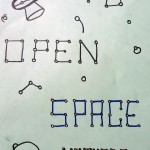 Open Space: In an open space, all members of a group have the possibility to initiate a session on any subject that they are interested in. In this way, they can discuss open questions or project ideas, learn from the experiences of others or offer a workshop. As participants have various backgrounds, they bring a lot of expertise including methods for non-formal education or social work, journalism and digital storytelling, experiences in running a museum or conducting projects on oral history.
Open Space: In an open space, all members of a group have the possibility to initiate a session on any subject that they are interested in. In this way, they can discuss open questions or project ideas, learn from the experiences of others or offer a workshop. As participants have various backgrounds, they bring a lot of expertise including methods for non-formal education or social work, journalism and digital storytelling, experiences in running a museum or conducting projects on oral history.
Inspiring projects and talks:
- “A history of the world in 100 objects” by the BBC, a joint project with Neil MacGregor of the British Museum.
- “With wings and roots”, a transmedia, transnational community project that is reimagining belonging beyond traditional borders.
- “Don’t ask where I’m from, ask where I’m a local”, TED talk by Taiye Selasi.
- “The danger of a single story” TED talk by Chimamanda Ngozi Adichie.
You may also want to listen to a podcast interview about the project (in German language only).
